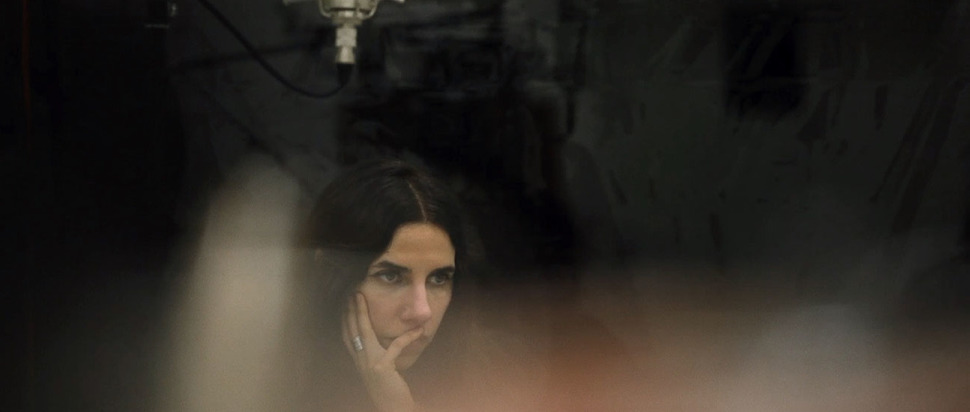A Dog Called Money
Seamus Murphy's documentary is a suitably frustrating companion piece to PJ Harvey's The Hope Six Demolition Project
2011's Let England Shake was PJ Harvey's haunting, scorched-earth excoriation of her homeland’s relationship to war that earned her a second Mercury Prize. When news broke that its follow-up – 2016's The Hope Six Demolition Project – would focus on the titular US housing program, one that was tantamount to social cleansing, hopes were high that she’d deliver another similarly political treatise on urban decay, especially given the extensive journalistic work she’d done in visiting the places that inspired the idea.
Ultimately, that wasn’t what materialised, with the record characterised by its vagaries. A Dog Called Money is Seamus Murphy’s belated document of his journeys with Harvey during the making of The Hope Six, an amalgam that lands somewhere between straightforward rock-doc (the studio footage is behind-the-scenes-by-numbers) and developing-world travel journal, held together in impressionistic fashion.
There is no obvious throughline; in addition to visiting the poor neighbourhoods in Washington DC that the HOPE VI project targeted, Harvey also turns up in Afghanistan and Kosovo, where the spectre of war and deprivation lingers. This would be the opportunity for some lucidity to be lent to the album’s themes; for Murphy to coax an explanation from the notoriously reticent singer of the ways in which these places shaped her thinking. He doesn’t, though, and instead, we’re left to guess, as she silently takes notes and locals are left to do the talking in quickfire interviews. Is the theme war on the underclasses, both literal and metaphorical? Perhaps. Fatally, Murphy doesn’t seem interested in drawing clear conclusions.
Accentuating the sense of an opportunity missed are the sections of the film shot at London’s Somerset House, where Harvey invited the public to observe the recording of The Hope Six Demolition Project from behind glass screens. Her motivations for doing so are not explored and as much as there’s obviously something beguiling about watching a master craftswoman at work, don’t expect any more insight into the process than those who shuffled into the Somerset House basement would have been able to glean from behind one-way glass.
That’s precisely where Harvey seems to be during A Dog Called Money: on the opaque side of the screen, seemingly blissfully unaware that there’s an audience outside of it straining for a little more insight or illumination, a key with which to unlock the thematic brilliance that, given her track record, many still suspect lurks beneath the surface on The Hope Six Demolition Project, if only they could crack the code.
Murphy shoots it handsomely, with an eye for striking shots that hint at something more profound. The lack of cohesion in the assembly, though, would’ve rendered A Dog Called Money a disappointment even if it had arrived punctually. Now, three-and-a-half years since the release of the album, it feels closer to an irrelevance.
Streaming on MUBI, and released in selected cinemas, from 8 Nov
